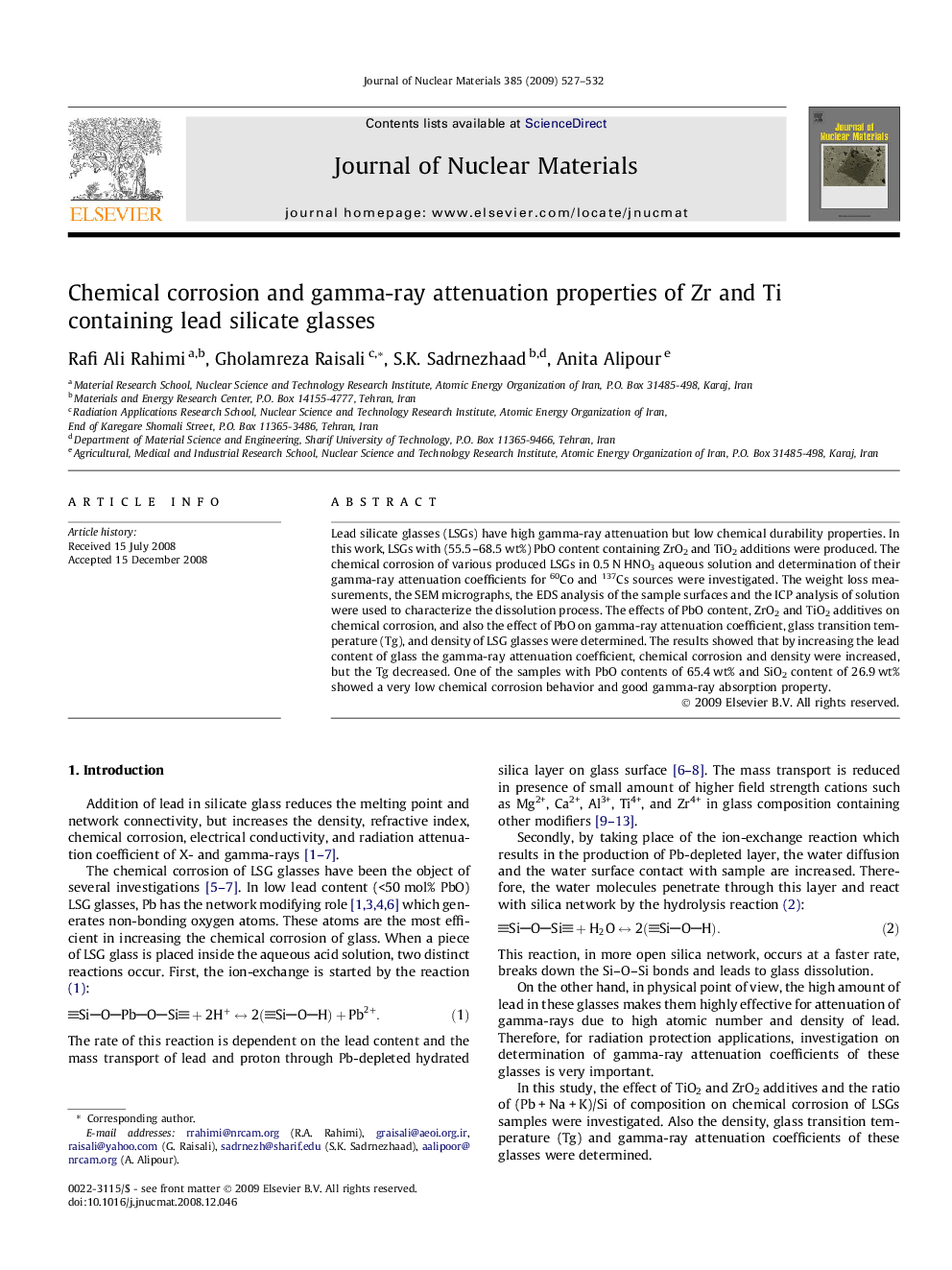| Article ID | Journal | Published Year | Pages | File Type |
|---|---|---|---|---|
| 1568120 | Journal of Nuclear Materials | 2009 | 6 Pages |
Lead silicate glasses (LSGs) have high gamma-ray attenuation but low chemical durability properties. In this work, LSGs with (55.5–68.5 wt%) PbO content containing ZrO2 and TiO2 additions were produced. The chemical corrosion of various produced LSGs in 0.5 N HNO3 aqueous solution and determination of their gamma-ray attenuation coefficients for 60Co and 137Cs sources were investigated. The weight loss measurements, the SEM micrographs, the EDS analysis of the sample surfaces and the ICP analysis of solution were used to characterize the dissolution process. The effects of PbO content, ZrO2 and TiO2 additives on chemical corrosion, and also the effect of PbO on gamma-ray attenuation coefficient, glass transition temperature (Tg), and density of LSG glasses were determined. The results showed that by increasing the lead content of glass the gamma-ray attenuation coefficient, chemical corrosion and density were increased, but the Tg decreased. One of the samples with PbO contents of 65.4 wt% and SiO2 content of 26.9 wt% showed a very low chemical corrosion behavior and good gamma-ray absorption property.
